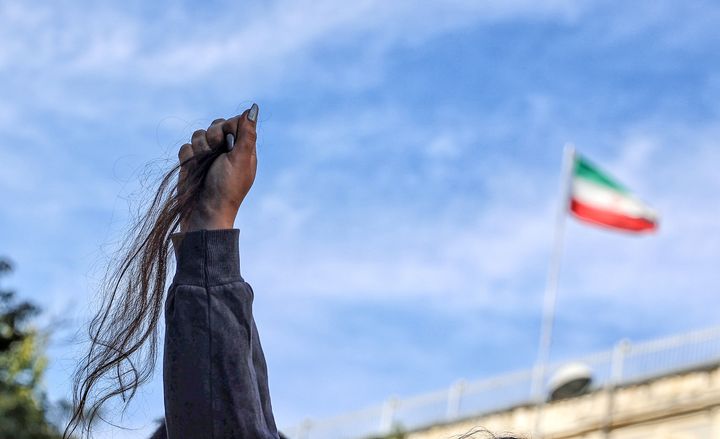
Iran has erupted into nationwide protest over women’s rights to bodily autonomy after a Kurdish 22-year-old died in the custody of the country’s “morality police,” who arrested her for not wearing her hijab more conservatively.
Since the demonstrations began earlier this month, tensions have risen between civilians and police in cities across Iran. Here is what we know about the unrest and the global reaction to the protests:
How Did This All Start?
Iran’s morality police enforce the country’s strict religious dress code among citizens — particularly women, who are required to cover up in public.
This includes wearing a hijab, which is a headscarf that some Muslim women around the world choose to wear but that the Iranian government mandates. Under more moderate former President Hassan Rouhani, the morality police eased enforcement and said in 2017 that they would no longer arrest women for violating the code.
But under President Ebrahim Raisi, a hard-liner elected last year, police aggression against women has skyrocketed. The United Nations’ human rights office says young women have been slapped, beaten and shoved into police vehicles in recent months.
Many Iranian women, particularly in major cities, have tried pushing the boundaries of the conservative dress code — with younger generations wearing looser hijabs and trying to avoid authorities.
But on Sept. 13, the morality police arrested Mahsa Amini in the capital city of Tehran for improperly wearing her hijab and sent her to a “re-education” center to receive “guidance” on dressing appropriately. Three days later, she was pronounced dead.
Amini’s death has become a symbol of women’s oppression in Iran, sparking ongoing demonstrations and police violence across dozens of cities, towns and villages. Women and men from various backgrounds are protesting against the government, accusing authorities of killing Amini for not abiding by the country’s strict hijab mandate.
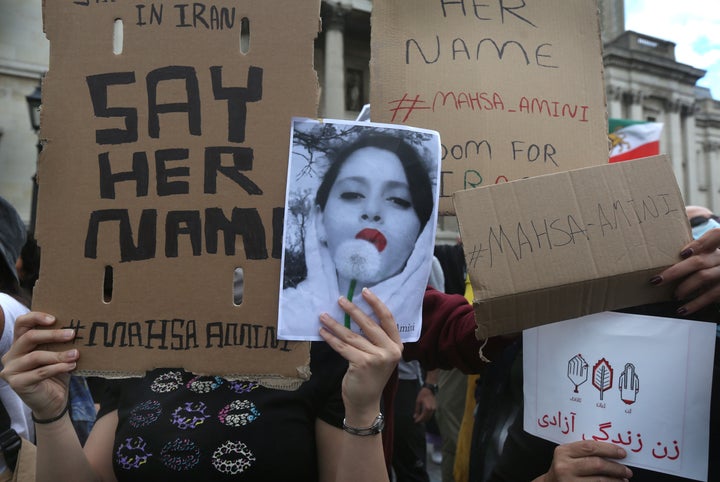
What Do The Protests Look Like?
Since Amini’s death, many Iranians have called for the abolition of the morality police and the hijab mandate. Online, viral videos show women taking off and burning their hijabs in bonfires, demanding bodily autonomy and the choice to decide whether they want to wear the headscarf.
Many Iranian women are also recording themselves cutting their hair and leading demonstrations without the hijab, with male protesters behind them in support.
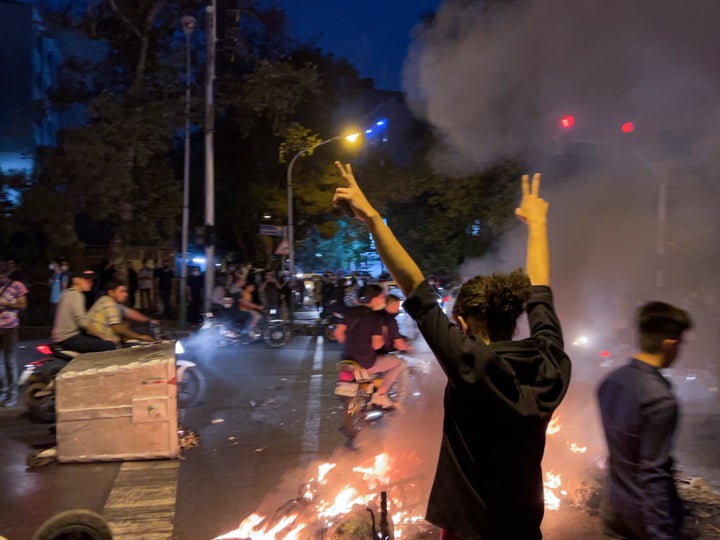
Such defiance poses a major risk to the women’s lives. As the protests continue, security forces have increased their aggression against civilians.
According to Iranian state TV, at least 41 protesters and police have been killed in the country since the demonstrations began on Sept. 17. An Associated Press review of statements from authorities tallied at least 13 dead, with police arresting over 1,400 demonstrators.
The Committee To Protect Journalists, a New York-based nonprofit, announced Monday that it had documented the arrests of at least 20 journalists during the demonstrations. “Iranian authorities should be ashamed of themselves for orchestrating this brutal crackdown,” said a CPJ program coordinator.
In addition to police violence and arrests, Iranian authorities have also imposed internet blackouts in a bid to stifle communication about demonstrations. But many people have sought to bypass the restrictions with virtual private networks, or VPNs, that can hide users’ locations.
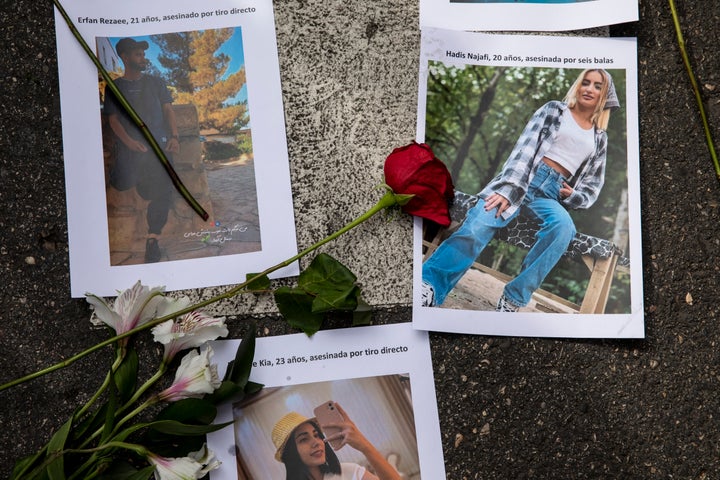
How Is The World Responding?
The unrest in Iran has captivated the world, inspiring others — especially women — to express solidarity and rally for Iranian women’s liberation.
After videos circulated of people in Iran burning their hijabs and cutting their hair, women in the Iranian diaspora followed suit and posting about it on social media. Users are also adding hashtags and commenting on popular posts with Amini’s name to spread awareness.
Several countries and major cities are seeing demonstrations in solidarity with Iranians. Police clashed with masses of demonstrators trying to reach Iran’s embassies in London and Paris earlier this week. Women took to the streets in Argentina holding banners that described the Iranian government as a “religious dictatorship” and demanded “justice.”
On Thursday, police in Oslo, Norway, detained 90 people after a crowd gathered outside the Iranian Embassy to protest Amini’s death, with some holding Kurdish flags.
The U.S., the European Union and several human rights organizations have condemned the violence used against protesters in Iran. The U.S. also imposed sanctions on the morality police for its harsh treatment of demonstrators.
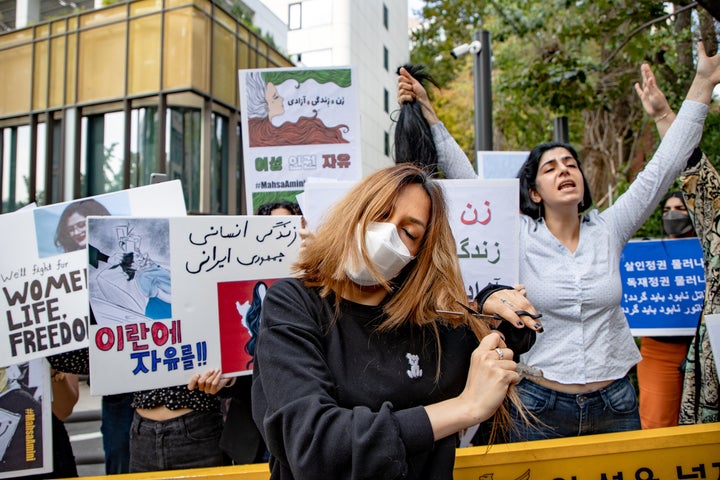
Why Does It Matter?
The hijab has not always been required in Iran. Women were largely free to choose how they dressed before the overthrow of the monarchy in 1979. While Iranians from across the political spectrum participated in the revolution that toppled the shah, Ayatollah Ruhollah Khomeini and his followers then seized power and turned the country into a Shiite Islamic state.
Khomeini announced on March 7 of that year that all women had to wear a hijab in Iran, leading to tens of thousands of women protesting in the streets the next day — International Women’s Day.
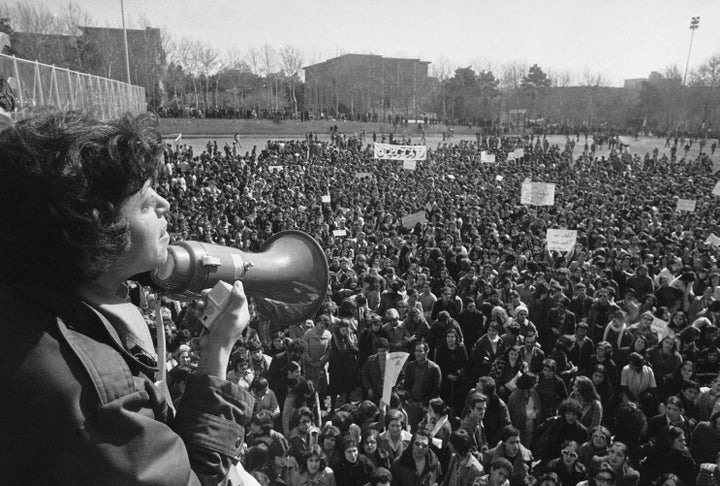
“It wasn’t just about the hijab, because we knew what was next, taking away women’s rights,” Susan Maybud, who participated in those protests while working with the foreign press, told the AP. “What you’re seeing today is not something that just happened. There’s been a long history of [Iranian] women protesting and defying authority.”
Many in the Muslim community also stress that women’s oppression in Iran is rooted not in the hijab itself, but in denying women the choice of whether to wear one. In countries like France and India, Muslim women are banned from wearing the hijab in public or in schools, even if they want to cover themselves. Officials from these nations frame hijab bans as liberating Muslim women, despite controlling their bodies just as much as a hijab mandate.
“To be (hijabi) or not be (hijabi) is the business of no state or man,” said Muslim writer Yassmin Abdel-Magied, who wears the headscarf, in a tweet last week. “Solidarity with women resisting patriarchal control, the world over.”
